IGUANAS
 Mėlyna Iguana |  Albino Iguana |
|---|---|
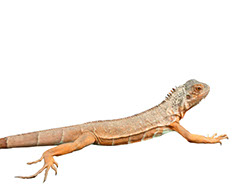 Raudona Iguana | 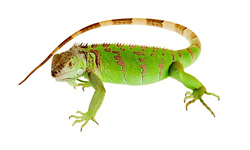 Žalioji iguana |
Iguana priežiūra lapas
Dydis: Suaugusiųjų iguanų yra skirtingo dydžio nuo keturių iki šešių pėdų ilgio.
Gyvenimas span: Jei tinkamai rūpinamasi, iguanų turėtų gyventi daugiau nei 20 metų nelaisvės.
BENDRA IŠVAIZDA: iguanų yra tai, ką dauguma žmonių galvoja, kai jie galvoja "Driežas". Jie turi penkis pirštus ant kiekvienos kojos. Jie turi mėsingos sklendę odos po smakru vadinamas pagurklis. Visi iguanų turi spygliais, kad paleisti atgal ilgį. Priešingai populiarių įsitikinimų, ne visi iguanų yra žalia. Dauguma nepilnamečiai yra šviesiai žalios spalvos, bet kaip jie amžiaus ir augti jie gali svyruoti spalvą iš nuobodu žalia rudos ar net oranžinės su dryžuotais uodegos.
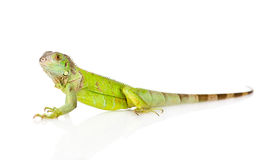
Būsto reikalavimai
Pridedama: Už suaugusiųjų iguana korpusas labai didelis. Gaubto turėtų būti bent šešių pėdų ūgio, apie 1
Temperatūra: iguanų yra kilę iš atogrąžų klimatas ir turi būti laikomos šiltai. Oro temperatūra turėtų būti 80.
Šilumos / Apšvietimo: Ultravioletinės apšvietimas suteikiant UVA ir UVB reikalingas tinkamam kalcio metabolizmui ir skeleto vystymąsi. Be tinkamo apšvietimo jūsų bus suserga ir miršta labai skausmingos mirties. Tinkamas apšvietimas gali būti pateikta naudojant fluorescencinės lempos specialiai pagaminti naudoti roplių, taip pat gyvsidabrio garų lempų, kurios taip pat šiek tiek šilumos, taip pat. Papildoma šiluma gali būti pateikta naudojant infraraudonųjų spindulių keramikos teršėjai ir kaitinamųjų mėgaudamasis lemputes. Karšta uolienos niekada neturėtų būti naudojamas bet kokiomis aplinkybėmis, kaip jie gali smarkiai nudeginti Iguana.

Substratas: iguanų dažnai liežuvis laižo savo aplinką. Dėl šios labiausiai kietųjų substrato (medžio drožlės, mulčiuoti, smėlis, ar miltelių tipų) nėra tinkama daugumai iguanų. Laikraščių netoksišku rašalu, mėsininko popierius, popieriniai rankšluosčiai, Vidaus / lauko kiliminę dangą, ar dirbtinės žolės visi padaryti puikus pasirinkimas. Jei naudojate Vidaus / lauko kiliminę dangą ar dirbtinė žolė įsitikinkite, kad nėra kabančios įsipareigojimų, kurie galėtų inkarinius į jūsų iguana nagus. Taip pat rekomenduojama, kad jūs turite kelis gabalus taip, kad jums gali pakeisti užterštus gabalus su švariu, o po to nuvalykite ir dezinfekuokite esamą rinkinį naudoti kitą valymo.
Environment: Iguanas come from a tropical climate and require a humidity level of 65% to 75%. To achieve this may require several misting’s a day. Many people opt to purchase an automatic misting system instead.
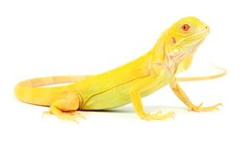
Diet: Iguanas are strict herbivores. Many older literatures will suggest feeding animal protein or even cat food. While some wild iguanas may ingest the occasional insect while eating leaves, it is not a significant portion on their diet. Iguanas that are fed too much animal protein will develop health problems and will die prematurely. A well balanced iguana diet will consist of about 40% to 45% greens (this includes, but is not limited to collard greens, turnip greens, mustard greens, dandelion greens (with flowers), escarole, and/or water cress), 40% to 45% other vegetables (this includes but is not limited to green beans, orange-fleshed squashes (butternut, Kabocha), snap or snow peas, parsnip, asparagus, okra, alfalfa (mature, not sprouts), onions, mushrooms, bell peppers, sweet potato, zucchini, yellow squash, and/or carrots), 10% or less of fruits (including, but not limited to Figs (raw or dried), blackberries, strawberries, raspberries, grapes, mango, melon (cantaloupe, honeydew, watermelon), papaya, banana, and/or apple), and less than 5% of other grains or commercial diets. Iguanas should never be rhubarb as it is toxic. Certain lettuces such as iceberg, romaine, and Boston butter lack sufficient nutrients and should only be fed occasionally. Acidic fruits (citrus, tomatoes, kiwi, pineapples, etc.) should also be only fed occasionally as well. Tofu can be occasionally offered as well for supplemental protein, though if too much is given it can lead to long term health issues. Wild plants and flowers are not recommended since they may be toxic to your iguana or may contain pesticides that could be toxic as well.
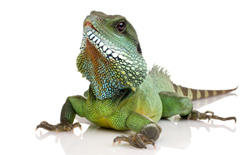
Maintenance: Cleanliness of the enclosure is essential. Waste products should be removed daily and the enclosure should be thoroughly cleaned and disinfected regularly. A 5% bleach solution provides an excellent disinfectant. Be sure to thoroughly rinse the solution from the enclosure before placing the iguana back in. Fresh water should also be offered at all times. Always wash your hands after handling your iguana or any of your iguana\'s cage accessories.